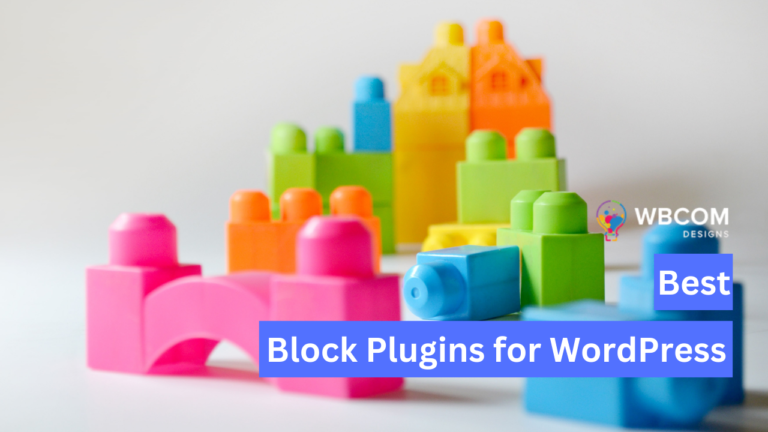Blogging has emerged as a promising avenue for generating income, offering individuals the opportunity to turn their passion for writing into a lucrative venture. With the rise of digital platforms and the growing demand for online content, monetizing a blog has become increasingly accessible for aspiring entrepreneurs and content creators. However, amidst the allure of financial rewards, it’s essential to recognize the significance of proper planning and strategic execution in the journey of starting and monetizing a blog.
While blogging presents exciting possibilities, success in this endeavor often hinges on meticulous planning, informed decision-making, and a well-thought-out strategy tailored to your niche and target audience. In this digital landscape, where competition is fierce and attention spans are fleeting, laying a solid foundation through effective planning is paramount to realizing the full potential of your blog as a source of income.
Table of Contents
ToggleGetting Started
Choosing a niche
At the outset of your blogging journey, it’s crucial to identify a niche that aligns with your interests, expertise, and the needs of your target audience. Selecting a niche allows you to carve out a distinct space in the crowded blogosphere and establish yourself as an authority in your field. By focusing on a specific topic or theme, you can attract a dedicated audience passionate about the same subjects, fostering engagement and loyalty over time.
Selecting a blogging platform
Once you’ve determined your niche, the next step is to choose a blogging platform that suits your needs and preferences. Popular options like WordPress, Blogger, and Medium offer varying features, customization options, and pricing plans. Consider factors such as ease of use, flexibility, scalability, and support when evaluating different platforms. Additionally, assess whether the platform aligns with your long-term goals and monetization strategies, as transitioning to a new platform later on can be cumbersome.
Also Read: Tricks And Tips To Boost Website Traffic
Setting up your blog
Setting up your blog involves several key steps to ensure it’s accessible, visually appealing, and ready to engage your audience effectively. Here’s a step-by-step guide on domain registration, hosting, and design:
Domain Registration
- Choose a domain name that reflects your blog’s topic, brand, or identity.
- Research domain availability and select a domain registrar to register your chosen domain.
- Follow the registrar’s instructions to complete the registration process, providing necessary contact and payment information.
- Consider purchasing privacy protection to safeguard your personal information from public access.
Web Hosting
- Choose a reliable web hosting provider that offers suitable hosting plans for your blog’s needs.
- Select a hosting plan based on factors such as storage, bandwidth, performance, and scalability.
- Purchase your chosen hosting plan and domain if you haven’t done so already.
- Connect your domain to your hosting account by updating the domain’s DNS settings with the hosting provider’s nameservers.
Blog Design
- Choose a blogging platform such as WordPress, Blogger, or Medium to build your blog.
- Install your chosen platform on your hosting account using one-click installation tools or manual setup.
- Select a theme or template for your blog that aligns with your brand, niche, and design preferences.
- Customize the theme to personalize your blog’s appearance, including colors, fonts, layouts, and header/footer options.
- Add essential features and functionalities, such as navigation menus, social media integration, contact forms, and widgets.
- Optimize your blog for mobile responsiveness to ensure it looks and functions well on various devices.
- Test your blog’s design and functionality across different browsers and devices to ensure a seamless user experience.
By following these steps, you can set up your blog effectively, from registering a domain and acquiring hosting to designing a visually appealing and user-friendly platform for your content.
Also Read: Customize the WooCommerce breadcrumb
Creating Compelling Content
Creating compelling content is essential for attracting and retaining readers to your blog. Here’s a guide on how to craft engaging posts:
Understanding your audience
- Research your target audience to gain insights into their demographics, interests, and pain points.
- Use tools like Google Analytics, social media analytics, and surveys to gather data on audience behavior.
- Identify their needs, preferences, and challenges to tailor your content to their interests effectively.
Content planning
- Develop an editorial calendar to organize your content strategy and ensure consistent posting.
- Brainstorm topics based on your audience’s interests, industry trends, keyword research, and seasonality.
- Consider different content formats, such as how-to guides, listicles, case studies, and interviews, to keep your blog diverse and engaging.
Writing engaging posts
- Start with a captivating headline that grabs readers’ attention and entices them to click.
- Write clear, concise, and well-structured content that addresses your audience’s needs and provides value.
- Use storytelling, anecdotes, and examples to make your content relatable and memorable.
- Incorporate relevant keywords naturally throughout your post to improve search engine visibility and attract organic traffic.
- Break up text with subheadings, bullet points, and short paragraphs to enhance readability and comprehension.
- Include a compelling call-to-action at the end of your post to encourage reader engagement, such as commenting, sharing, or subscribing.
Also Read: Building an eCommerce Website Quickly
Incorporating multimedia
- Use images, videos, and infographics to complement and enhance your written content.
- Choose high-quality visuals that are relevant to your topic and visually appealing to your audience.
- Create original multimedia content or use stock images and videos to add visual interest to your posts.
- Optimize multimedia elements for fast loading times and compatibility with different devices and browsers.
- Caption and alt-text your images and videos to improve accessibility and SEO.
By understanding your audience, planning your content strategically, writing engaging posts, and incorporating multimedia effectively, you can create compelling content that resonates with your readers and drives engagement on your blog.
Building Your Audience
Building your audience is essential for the success of your blog, and it requires a strategic approach that combines promotion, engagement, collaboration, and analysis. Firstly, promoting your blog involves leveraging various channels such as social media, email marketing, and SEO techniques to increase visibility and attract traffic. Social media platforms serve as valuable tools for sharing your blog posts and engaging with potential readers, while email marketing allows you to nurture relationships with subscribers and drive repeat visits. Additionally, implementing SEO strategies helps improve your blog’s search engine rankings and organic visibility.

Engaging with your audience is equally important for fostering a loyal community and encouraging interaction. This includes responding promptly to comments on your blog posts, soliciting feedback through polls and surveys, and encouraging user-generated content. By actively engaging with your audience, you demonstrate responsiveness and authenticity, which can strengthen connections and encourage repeat visits.
Monetization Strategies

1. Display advertising
Display advertising: Setting up Google AdSense or other ad networks

Sign up for an AdSense account:
- Visit the Google AdSense website and click on the “Sign up now” button.
- Log in with your Google account or create a new one if you don’t have one already.
- Fill out the required information, including your website URL, email address, and preferred language.
Add your website:
- Once your AdSense account is set up, add your website by clicking on the “Sites” tab.
- Enter your website URL and verify ownership by adding a small piece of code to your website or linking your Google Analytics account.
Customize ad settings:
- Navigate to the “Ads” tab and choose the types of ads you want to display on your website (e.g., text ads, display ads, native ads).
- Customize ad sizes, styles, and placements to match your website’s design and layout.
Get ad code:
- Generate ad code by selecting the ad unit type and ad format you want to display on your website.
- Copy the generated ad code and paste it into your website’s HTML code in the desired locations (e.g., within content, sidebar, header/footer).
Monitor performance:
- Use the AdSense dashboard to track your ad performance, including impressions, clicks, click-through rate (CTR), and earnings.
- Experiment with different ad placements, sizes, and formats to optimize performance and maximize revenue.
Meet eligibility requirements:
- Adhere to Google AdSense policies and guidelines to ensure compliance and maintain your account in good standing.
- Monitor your website traffic and ensure it meets AdSense eligibility requirements, such as sufficient content, traffic volume, and compliance with Google’s content policies.
Receive payments:
- Once you reach the minimum payment threshold, typically $100, Google AdSense will issue payments to you via direct deposit or check.
- Set up payment settings and provide accurate payment information to receive earnings securely and efficiently.
By following these steps, you can set up Google AdSense or other ad networks on your website and start monetizing your blog through display advertising.
Also Read: Voice Search Optimization: 7 Tips to Improve Your Results
2. Affiliate marketing
Affiliate marketing: Partnering with brands and earning commissions on sales

- Research and Select Affiliate Programs: Research affiliate programs relevant to your blog’s niche and audience. Choose reputable programs offered by brands or companies that align with your content and audience interests.
- Apply to Affiliate Programs: Apply to join the selected affiliate programs by completing the application process on their respective websites. Some programs may have specific eligibility criteria or require approval before you can start promoting their products or services.
- Obtain Affiliate Links: Upon approval, you’ll receive unique affiliate links or tracking codes for the products or services you want to promote. These affiliate links are essential for tracking referrals and attributing commissions to your account.
- Integrate Affiliate Links into Your Content: Identify opportunities within your blog content to naturally incorporate affiliate links. This could include product reviews, tutorials, recommendations, or listicles related to the products or services you’re promoting.
- Create Compelling Content: Craft high-quality content that provides value to your audience while seamlessly integrating affiliate links. Focus on addressing your audience’s needs, solving their problems, and showcasing the benefits of the products or services you’re promoting.
- Disclose Affiliate Relationships: Disclose your affiliate relationships transparently to your audience to maintain trust and credibility. Indicate when content contains affiliate links or sponsored content, and adhere to applicable disclosure guidelines and regulations.
- Track Performance and Optimize: Monitor the performance of your affiliate links using analytics tools provided by affiliate programs or third-party tracking platforms. Track metrics such as clicks, conversions, and commissions earned to gauge the effectiveness of your affiliate marketing efforts.
- Optimize Your Strategy: Continuously analyze the performance of your affiliate marketing campaigns and identify opportunities for improvement. Experiment with different promotional tactics, content formats, and product selections to optimize your strategy and maximize earnings.
- Nurture Relationships with Brands: Build and nurture relationships with the brands or companies whose products or services you’re promoting as an affiliate. Establishing rapport and communication channels can lead to exclusive offers, higher commission rates, and additional promotional opportunities.
- Provide Value to Your Audience: Focus on providing genuine recommendations and valuable insights to your audience. Prioritize their interests and needs over maximizing affiliate commissions, as long-term trust and engagement are key to sustainable affiliate marketing success.
Also Read: BuddyPress Ads
3. Sponsored content
Sponsored content: Writing sponsored posts or reviews for brands

- Identify Brands and Partnerships: Research and identify brands that align with your blog’s niche, audience, and values. Look for brands that offer products or services relevant to your content and have a similar target audience. Reach out to potential brand partners via email or social media to inquire about sponsorship opportunities.
- Negotiate Terms and Compensation: Once you’ve established contact with potential brand partners, negotiate terms and compensation for sponsored content. Discuss factors such as content format, deliverables, deadlines, and payment terms. Clarify expectations regarding the level of creative control, disclosure requirements, and brand messaging to ensure alignment between your blog’s voice and the brand’s objectives.
- Create a Sponsored Content Proposal: Develop a comprehensive sponsored content proposal outlining the scope of work, deliverables, and pricing details. Include information about your blog’s audience demographics, reach, and engagement metrics to showcase your value to potential brand partners. Present creative ideas and content concepts tailored to the brand’s products or services to demonstrate your ability to deliver compelling sponsored content.
- Write High-Quality Sponsored Posts: Once the partnership is finalized, create high-quality sponsored posts or reviews that effectively promote the brand’s products or services while providing value to your audience. Incorporate the brand’s messaging, key selling points, and any specific guidelines provided by the brand into your sponsored content. Write engaging, informative content that resonates with your audience and maintains authenticity and transparency.
- Disclose Sponsored Content Ethically: Ensure full transparency and disclosure by clearly labeling sponsored content as such to your audience. Use prominent disclosures such as “Sponsored,” “Paid Partnership,” or “Advertisement” to indicate that the content is sponsored by a brand. Disclose any material connections or financial relationships with the brand to maintain trust and transparency with your audience.
- Publish and Promote Sponsored Content: Publish the sponsored content on your blog according to the agreed-upon timeline and specifications. Promote the sponsored posts across your social media channels and email newsletters to maximize visibility and reach. Engage with your audience by responding to comments, questions, and feedback related to the sponsored content to foster meaningful interactions and maintain authenticity.
- Evaluate Performance and Provide Reporting: Monitor the performance of sponsored content using analytics tools to track metrics such as traffic, engagement, and conversion rates. Provide performance reports and analytics data to the brand partner to demonstrate the effectiveness of the sponsored content in achieving their marketing objectives.
4. Selling products or services
Selling products or services: Creating and selling ebooks, courses, merchandise, etc.

- Identify Your Niche and Audience: Before creating products or services to sell, it’s essential to understand your niche and target audience. Consider their interests, pain points, and preferences to develop offerings that resonate with them.
- Choose Your Product or Service: Determine what type of product or service you want to create and sell. This could include ebooks, online courses, merchandise, consulting services, or digital downloads.
- Plan Your Offering: Develop a detailed plan for your product or service, including its scope, content, features, and pricing. Consider how it aligns with your audience’s needs and provides value to them.
- Create Your Product or Service: Depending on the type of offering, create the content, design, or materials needed to bring it to life. This may involve writing, designing, recording, or developing digital assets.
- Set Up a Sales Platform: Choose a platform to sell your product or service, such as your blog website, an e-commerce platform like Shopify or WooCommerce, or a third-party marketplace like Etsy or Teachable.
- Create Sales Pages or Listings: Create compelling sales pages or listings for your product or service, highlighting its features, benefits, and value proposition. Use persuasive copywriting and high-quality visuals to attract potential buyers.
- Set Pricing and Payment Options: Determine the pricing for your product or service, considering factors like production costs, market demand, and competitor pricing. Offer flexible payment options, such as one-time purchases, payment plans, or subscriptions, to accommodate different customer preferences.
- Implement Secure Payment Processing: Set up secure payment processing to facilitate transactions and protect customer data. Use reputable payment gateways like PayPal, Stripe, or Square to process payments securely and efficiently.
- Launch and Promote Your Offering: Launch your product or service with a compelling marketing campaign to generate buzz and attract buyers. Promote it through various channels, such as your blog, social media, email marketing, and partnerships with influencers or affiliates.
- Provide Customer Support and Feedback: Offer excellent customer support to address any questions, concerns, or issues that arise. Encourage feedback from customers to continuously improve your offerings and enhance the customer experience.
- Evaluate and Iterate: Monitor the performance of your product or service, including sales, customer feedback, and satisfaction metrics. Use this data to iterate and refine your offering over time, ensuring it remains relevant and valuable to your audience.
Also Read: Top WordPress Sidebar And Widget Plugins
5. Membership or subscription models
Membership or subscription models: Offering premium content or access to exclusive resources:

- Identify Your Premium Content: Determine what type of content or resources you can offer exclusively to your subscribers. This could include in-depth articles, tutorials, webinars, downloadable resources, or access to a private community forum.
- Define Subscription Tiers: Decide on the structure of your membership or subscription model. Will you offer different tiers with varying levels of access and benefits? Consider factors such as pricing, frequency of content updates, and exclusivity of resources for each tier.
- Choose a Membership Platform: Select a membership or subscription platform to manage subscriptions, process payments, and deliver premium content securely. Popular options include WordPress plugins like MemberPress or third-party platforms like Patreon or Substack.
- Set Up Subscription Plans: Create subscription plans based on the tiers you’ve defined, specifying the benefits and access levels for each plan. Determine pricing based on factors such as the value of the content/resources offered, competition, and your target audience’s willingness to pay.
- Develop Premium Content: Create compelling premium content or resources that provide value to your subscribers and justify the subscription fee. Ensure that your premium content is exclusive, high-quality, and tailored to the interests and needs of your target audience.
- Promote Your Membership Program: Market your membership or subscription program to your audience through various channels, including your blog, email newsletters, social media, and other digital platforms. Highlight the benefits of subscribing, such as access to exclusive content, community interaction, or member discounts.
- Launch and Iterate: Launch your membership program and monitor its performance closely. Gather feedback from subscribers and iterate based on their preferences and needs. Continuously evaluate and improve your premium content offerings to retain existing subscribers and attract new ones.
- Provide Ongoing Value: Maintain engagement and satisfaction among your subscribers by consistently delivering high-quality premium content and resources. Regularly update your offerings, interact with your community, and respond to feedback to ensure a positive subscriber experience and long-term retention.
Maximizing Revenue
Experimenting with Different Monetization Methods
Experiment with various monetization methods to determine which ones resonate best with your audience and generate the highest revenue. Test different strategies such as display advertising, affiliate marketing, sponsored content, product sales, and membership models. Analyze the performance of each method using metrics such as revenue generated, conversion rates, and user engagement. Continuously refine your monetization strategy based on the insights gained from experimentation to optimize revenue generation.
Optimizing Ad Placement
Optimize the placement of ads on your blog for maximum visibility and clicks. Experiment with different ad formats, sizes, and placements to identify the most effective configurations. Consider placing ads strategically within your content, sidebar, header, or footer to ensure they are prominent without detracting from the user experience. Use heatmaps, click-through rate data, and user feedback to assess the effectiveness of ad placement and make data-driven decisions to maximize ad revenue.
Diversifying Income Streams
Diversify your income streams by combining multiple revenue sources to spread risk and increase overall revenue potential. Instead of relying solely on one monetization method, explore opportunities to diversify your revenue streams through a mix of advertising, affiliate marketing, sponsored content, product sales, and subscription models. By diversifying your income streams, you can reduce reliance on any single source of revenue and adapt to changes in market conditions or audience preferences more effectively.
Scaling Your Efforts
Scale up your blog and income through growth strategies aimed at increasing traffic, expanding your audience reach, and enhancing monetization opportunities. Invest in strategies such as search engine optimization (SEO), content marketing, social media promotion, and email marketing to attract more visitors to your blog and increase engagement. Explore expansion opportunities, such as launching new products or services, entering new markets, or collaborating with other bloggers and influencers. Continuously monitor and analyze your blog’s performance metrics to identify areas for improvement and scale your efforts accordingly to achieve sustained growth in both traffic and revenue.
Conclusion On How to Start and Monetize Your Blog
In conclusion, starting and monetizing a blog involves several key steps that require careful planning, execution, and persistence. From choosing a niche and setting up your blog to implementing various monetization strategies and maximizing revenue, the journey of blogging is both exciting and challenging. By leveraging social media, engaging with your audience, collaborating with others, and analyzing performance, you can build a loyal following and generate income from your passion for writing and sharing valuable content.
I encourage readers to take action and pursue their blogging goals with determination and enthusiasm. While the road to success may be filled with obstacles and uncertainties, the potential rewards of blogging as a business are immense. From financial independence and creative fulfillment to personal growth and community impact, blogging offers endless opportunities for those willing to invest time, effort, and creativity. Embrace the journey, learn from your experiences, and remember that every challenge you encounter is an opportunity for growth and innovation in the dynamic world of blogging.
Interesting Reads:
Best Free Quantum App Development Tools In 2024
Design engaging experiences in insurance mobile apps through gamification techniques








